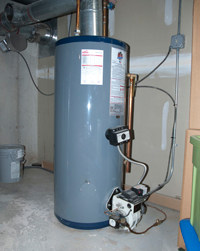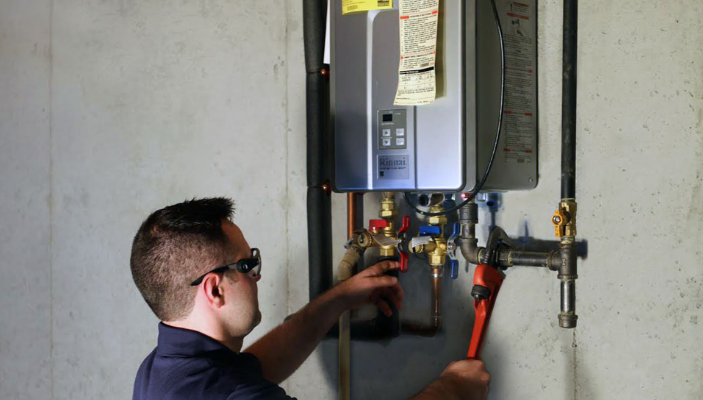Ways to Extend the Lifespan of Your Home's Hot Water System Through Maintenance
Request ServiceWe've discovered this post pertaining to How to Maintain a Hot Water Heater in a Few Simple Steps directly below on the internet and felt it made good sense to talk about it with you here.

Warm water is essential for everyday convenience, whether it's for a refreshing shower or washing meals. To guarantee your hot water system runs effectively and lasts much longer, regular maintenance is vital. This write-up provides useful suggestions and understandings on how to maintain your home's hot water system to prevent disturbances and costly repairs.
Intro
Maintaining your home's warm water system might seem overwhelming, but with a couple of simple steps, you can guarantee it operates efficiently for several years to find. This overview covers everything from understanding your warm water system to do it yourself maintenance ideas and recognizing when to hire professional assistance.
Importance of Preserving Your Warm Water System
Normal maintenance not just expands the lifespan of your warm water system yet also ensures it runs efficiently. Overlooking maintenance can cause lowered efficiency, higher power costs, and even premature failing of the system.
Indicators Your Hot Water System Needs Maintenance
Recognizing when your warm water system needs attention can stop significant concerns. Look out for indications such as irregular water temperature level, weird noises from the heater, or rustic water.
Comprehending Your Warm Water System
Prior to diving into maintenance tasks, it's practical to recognize the basic components of your hot water system. Usually, this consists of the hot water heater itself, pipelines, anode poles, and temperature level controls.
Regular Monthly Upkeep Tasks
Routine regular monthly checks can help catch minor concerns prior to they rise.
Purging the Water Heater
Flushing your water heater removes debris build-up, enhancing effectiveness and extending its life.
Checking and Replacing Anode Rods
Anode poles protect against deterioration inside the storage tank. Examining and replacing them when worn out is critical.
Evaluating and Readjusting Temperature Settings
Readjusting the temperature level setups guarantees optimal efficiency and security.
DIY Tips for Maintenance
You can do a number of maintenance jobs on your own to keep your hot water system in leading condition.
Looking for Leakages
Consistently check pipes and links for leakages, as these can result in water damage and greater expenses.
Testing Pressure Relief Valves
Checking the pressure relief valve guarantees it functions appropriately and stops excessive stress accumulation.
Insulating Pipelines
Protecting warm water pipelines reduces warmth loss and can save power.
When to Call a Specialist
While DIY upkeep is useful, some issues call for professional expertise.
Complicated Issues Calling For Professional Aid
Examples consist of major leakages, electrical troubles, or if your water heater is continually underperforming.
Routine Specialist Maintenance Conveniences
Professional upkeep can include complete inspections, tune-ups, and guaranteeing conformity with safety criteria.
Conclusion
Normal maintenance of your home's hot water system is crucial for effectiveness, long life, and cost financial savings. By following these suggestions and recognizing when to seek expert help, you can guarantee a trusted supply of hot water without unforeseen disturbances.
Water Heater Maintenance: The Basics
Maintaining your water heater will ensure it operates efficiently and has a longer lifespan. Neglecting regular maintenance can lead to costly repairs and an even bigger chunk of your savings if you have to replace it sooner than necessary. But there’s good news: Most water heater maintenance tasks are relatively simple and easy for homeowners with basic DIY skills.
Flush the Water Heater
Over time, sediment and minerals can build up in the tank, reducing its efficiency and potentially causing damage. To flush the tank, turn off the power or gas supply, attach a hose to the drain valve near the bottom and open the valve to drain the water until it runs clear. Ideally, flush the tank annually.
Replace the Anode Rod
The anode rod is a sacrificial metal rod that helps prevent corrosion inside the tank. Inspect and replace it every three to five years or per the manufacturer's recommendation. To replace the anode rod, turn off the power or gas supply, drain a few gallons of water from the tank, unscrew the old rod and replace it with a new one. If the anode rod is significantly corroded or covered in calcium buildup, it's a sign the water heater may need to be replaced soon.
Tune-Up
A yearly tune-up can help identify potential issues and ensure your water heater operates at peak efficiency. This typically involves checking the thermostat, burner assembly (for gas heaters) and any other components specified by the manufacturer. During a tune-up, the technician may also clean the burner and adjust the pilot light (for gas heaters) or examine the heating elements (for electric heaters).
How to Maintain Your Water Heater
Insulate the tank. Insulating the tank can improve energy efficiency and reduce heat loss, saving you money on energy bills. You can purchase precut insulation blankets designed specifically for water heaters or use standard fiberglass insulation wrapped securely around the tank. Check the temperature. The recommended water temperature for most households is around 120 degrees Fahrenheit (49 degrees Celsius). Higher temperatures can increase energy costs and potentially cause scalding. Use a kitchen thermometer to check the temperature at the faucet nearest the water heater. Monitor water pressure. Excessive water pressure can strain the water heater and cause leaks or even tank failure. Install a pressure-reducing valve if necessary. The ideal water pressure range is between 60 and 70 PSI (pounds per square inch). Test the temperature and pressure (T&P) relief valve. The T&P relief valve is a safety feature that releases pressure if the tank gets too hot or the pressure builds up too high. Test it annually by lifting the lever and allowing a small amount of water to release. Replace the valve if it doesn't release water or reseal properly. Check for leaks. Regularly inspect the tank, pipes and fittings for leaks or corrosion. Deal with issues promptly to prevent further damage. Even a small leak can lead to significant water damage over time. Consider a tankless water heater. If your traditional tank-style water heater is nearing the end of its lifespan ( typically 10 years), consider replacing it with a tankless water heater. These units heat water on demand, reducing standby energy losses and potentially saving you money on your energy bills. Schedule professional maintenance. While homeowners can perform many water heater maintenance tasks, it's still a good idea to schedule professional maintenance every few years. A plumber or HVAC technician can thoroughly inspect the unit, identify potential issues and ensure it operates safely and efficiently. https://www.homeserve.com/en-us/blog/home-improvement/hot-water-heater-maintanence/

I found that article about How to Maintain a Hot Water Heater in a Few Simple Steps when doing a search on the web. For those who liked our article if you please don't forget to share it. Thanks a bunch for your time. Don't hesitate to stop by our website back soon.
Request Free Estimate